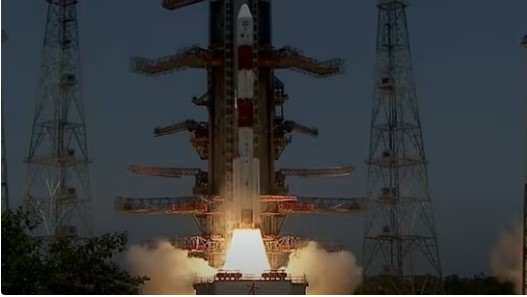
India’s ISRO Launches Aditya L1 Solar Mission
LAHORE MIRROR – The Indian Space Research Organisation (ISRO) has launched the PSLV-C57.1 rocket carrying the Aditya-L1 orbiter, India’s maiden solar mission, from the Satish Dhawan Space Centre at Sriharikota in Andhra Pradesh here on Saturday.
The Aditya-L1 mission, named after the Hindi word for the sun, aims to investigate solar winds, which are responsible for disturbances on Earth, often observed as auroras.
The spacecraft’s unique design involves a four-month journey covering approximately 1.5 million kilometres to a specific point in space known as a Lagrange Point.
At these points, gravitational forces balance, reducing the spacecraft’s fuel consumption significantly.
The Lagrange Points are named after the renowned Italian-French mathematician Joseph-Louis Lagrange, who made significant contributions to celestial mechanics.
The launch was executed flawlessly, with the Polar Satellite Launch Vehicle (PSLV) embarking on its “longest flight” lasting approximately 63 minutes.
One of the mission’s objectives is to capture images of the sun for scientific research.
Scientists have identified five Lagrangian points, or parking areas, between the Earth and the Sun where objects tend to stay in a stable position.
The mission’s primary payload, the Visible Emission Line Coronagraph (VELC), will study the solar corona and the dynamics of Coronal Mass Ejections (CME).
It is expected to transmit 1,440 images per day to ground stations for analysis once it reaches its designated orbit.
VELC, considered the largest and most technically challenging payload on Aditya-L1, will be accompanied by other instruments, such as the Solar Ultraviolet Imaging Telescope, the Aditya Solar Wind Particle Experiment (ASPEX), the Plasma Analyser Package for Aditya (PAPA), and the Solar Low Energy X-ray Spectrometer.
Furthermore, the High Energy L1 Orbiting X-ray Spectrometer (HEL1OS) will investigate X-ray flares emitted by the Sun across a wide energy range. The mission also includes a Magnetometer payload capable of measuring interplanetary magnetic fields at the L1 point.
Importantly, all payloads on Aditya-L1 are indigenously developed through close collaboration among various ISRO centers.
This achievement represents a significant step in India’s space exploration endeavours, providing valuable insights into solar activity and its impact on our planet.
